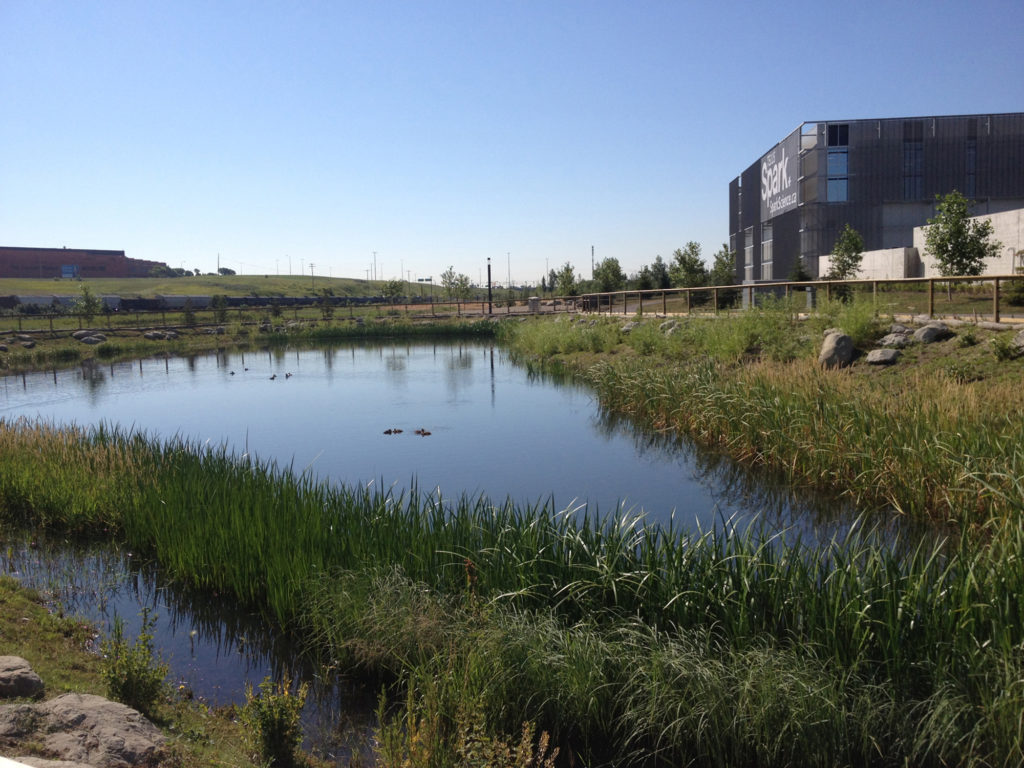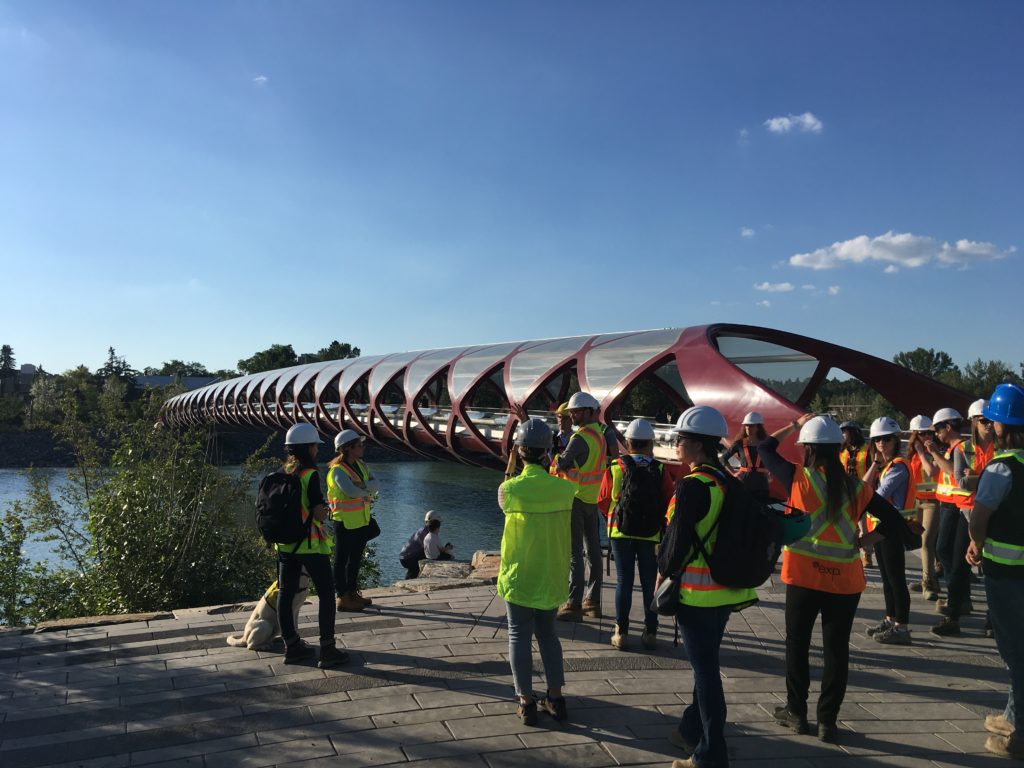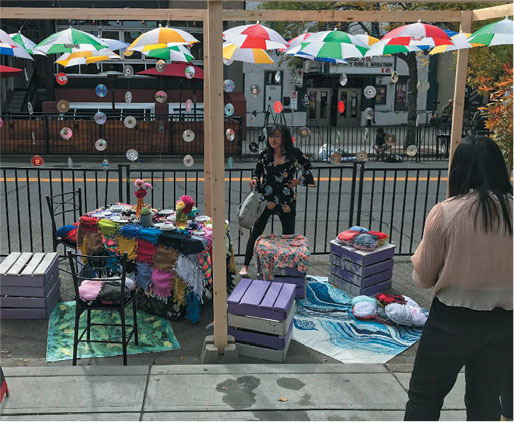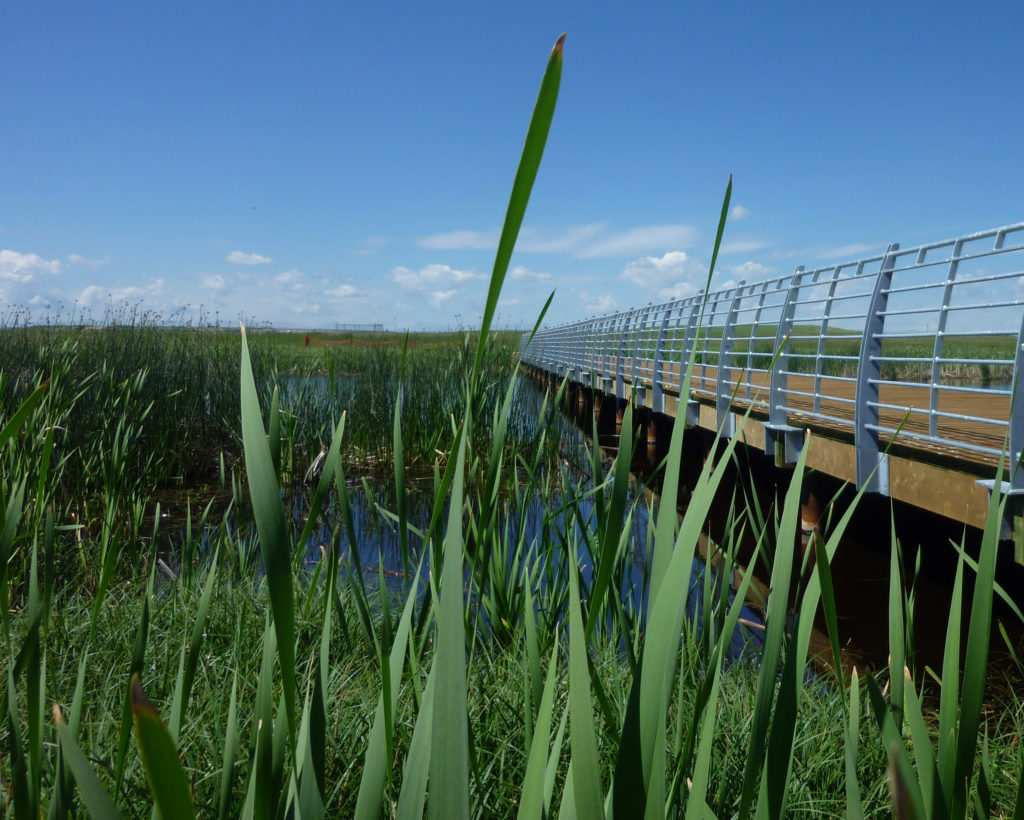An Office of One: Todd Reade, Alberta Association of Landscape Architects
A life of leisure may sound like a dubious career path, but for Todd Reade, executive director of the Alberta Association of Landscape Architects, working to improve urban life through support of leisure activities and the architectural environment in which we live has been rewarding. Association Adviser caught up with Todd to chat about his work in the charitable and association sector, how he balances multiple, simultaneous roles at two associations, and what it’s like to work as a staff of one at AALA.
Association Adviser: Tell us about your professional background. How did you end up at the Alberta Association of Landscape Architects?
Todd Reade: I earned a degree in recreation and leisure studies from the University of Alberta. The program requires completing a practicum, and for mine I worked with the Alberta Recreation and Parks Association. I ended up working with them as a special projects manager for another seven years post-graduation on the professional side of things: promotion of the industry, mostly. After a brief stint working in US summer camps and water park management, I came back to the charitable sector as the education director for the Lifesaving Society of Alberta and Northwest Territories. I’ve served in various roles with Deaf and Hear Alberta for almost 8 years, and I’ve been the executive director of the Alberta Association of Landscape Architects since February 2017.

AA: What drew you to recreation and leisure?
TR: After high school I planned to study computer programming, but quickly discovered I liked working with people more than computers. Because I’ve worked in aquatics since I was 16, making a career out of recreation was a natural fit.
AA: You’re also the director of finance for Deaf and Hear Alberta, a nonprofit dedicated to addressing the accessibility, advocacy, education and communication needs of the deaf, deafened, and hard of hearing populations of Alberta. How do you balance the two roles?
TR: I try to address these two roles in blocks of time each week. Normally, AALA is my day job. I do finance work for Deaf and Hear Alberta (DHA) evenings and weekends. Sometimes there’s a daytime commitment for them, but I can almost always manage that. Like most finance positions it’s a month-end heavy amount of work. I’m not doing routine bookkeeping but overseeing month-end procedures, strategic finance planning, audits, and other high-level work characteristic of a CFO.
AA: Do the strategies or processes you use at one organization inform your work at the other?
TR: Absolutely. The work at DHA is universal to all charitable organizations. A lot of systems I built for one or the other I transition to the other. I built paperless systems on one and transferred that process to the other.
AA: Part of the AALA’s mission is to promote the value and role of landscape architects and landscape architectural technologists. How, exactly, does the association do that?
TR: First, let me explain the difference in roles between a landscape architect and landscape architectural technologists: A landscape architect is a professional designation protected by law. In the U.S. these laws are usually practice acts. In Canada they are currently title acts. A practice act means anyone who does the work must be licensed. A title act means anyone could do the work, but to use the title you must be registered.

Landscape techs go through a two-year diploma program and most commonly support landscape architects. They’re often involved in drafting designs, spec work, and other technical side of industry. Landscape architects work more at the design level.
We fulfill two halves as an association. We regulate the professionals who can use the title within the province of Alberta, and we spend a lot of time educating industry and municipalities about the protection of the landscape architect title and how to protect it. Not only can a professional not use their title incorrectly, municipalities need to know when to use it and when not to use it.
In Canada, a lot of professions are self-regulating. So we focus a lot on promotion of the industry and how landscape architecture makes life better for everyone. We ensure people working on the regulatory side are not involved in the promotion side of things. That’s a legal gray space: If you promote the profession while regulating who gets in, it borders on anti-trust issues – so we are very careful to keep those functions independent.
AA: From AALA’s website, it looks like the association counts about 450 members. That’s relatively small. What are some advantages to having a small membership?
TR: For me as an executive, I can really know the majority of members personally. I wouldn’t say I know them all, but I have the ability to know them individually as professionals and what their interests and priorities are. Within a large organization you don’t have that ability. I’ve probably met or have a working relationship with half of our members.
I’m the sole staff member at AALA, so I go to everything! We run about 27 events per year, and I might have missed about three events in my three years so far with the association. I have committee support that can inform content. I’m not a landscape architect, so our committees come up with technical content related to practice of the profession. But I touch all aspects of operations end-to-end. When a vendor calls and says, “I’d like to speak with the person responsible for XYZ,” that’s always me!
AA: What are some disadvantages?
TR: Like most small organizations, you don’t have a big budget or a large team driving the work. For me especially in the last year, I’ve had to set practical priorities and be honest with our board about what I’m capable of and what our priorities should be based on our manpower. I’m at a time capacity. Volunteers do step up and take on a lot of work, and they help out fantastically.
AA: Has AALA ever considered hiring an association management company (AMC) to help with staffing limitations?
TR: Yes. AALA has worked with an AMC in the past but hired me to replace them. That decision was intentionally driven by the need to have someone with experience in strategic leadership and actively pushing an agenda forward. I’m that person, but I spend a lot of my time doing routine communication and finance tasks that might be better passed off to a person whose job description requires a lesser salary than I do. I’m an expensive bookkeeper! Things are where we might consider a part-time person to take care of day-to-day stuff that is simply filling my time.
AA: What are some major initiatives that AALA is advancing at the moment?
TR: We want to promote the landscape architecture industry more. This means promoting our careers in high schools. Having a greater focus on moving from a title act to a practice act. Maybe more educational programs for members, though this year we have a few big ones planned that I’m looking forward to. And we want to host more long-term programs in certain practice areas.
AA: Tell us about PARK(ing) Day and some other current AALA programming.
TR: PARK(ing) Day is a new initiative for AALA as industry promotion. We’ve partnered with the City of Calgary and this year we’re hoping to partner with Edmonton to put on the same event. PARK(ing) Day is when artists and landscape architects take over a community and convert parking stalls into interactive art exhibits. A lot of our major member firms participate so it’s’ a great way for the association to get exposure about who we are and what we do. We had more than 1 million social media touchpoints for last year’s PARK(ing) Day in Calgary.

Last year we also hosted a series of Lunch and Learns, but they were not well attended because they are just taking off. We know members like these in part because they allow members in rural areas to have access to education programs that they typically don’t get. These short events offer a chance for our sponsors to engage with members, too. We’re focusing more on Lunch and Learns this year, but if I had more time it would get more attention.
In terms of licensure efforts, when I was first hired, the members involved identified some concerns and stresses about the licensure process. Being an office of one, I was also keen to find efficiencies to make the process less of a burden on me. How could we reduce friction for uses in the pipeline? How could we modernize the process to speed it up? We have a mandatory supervised professional practice that requires several hundred hours, and the logs to record candidates’ time was all on paper. Logging hours, having those hours approved, getting the approval back to the candidate took an exorbitant amount of time. But now, those logs are now entirely electronic – candidates submit them electronically, supervisors review them electronically, and approvals are given electronically. We’ve worked hard to make our website paperless from start to finish of a career.

Another process we’re examining is how to make entering the landscape architect profession easier for international applicants without compromising our licensure standards. We’re getting more international applicants trying to enter the profession in Alberta, but not all international degree programs hold students to the same standards as Canadian/US universities and colleges. We’re looking into how we can acknowledge and respect the work of people who come in from Australia, India, or Southeast Asia whose degree programs we don’t recognize but still have experience. We want to support labor mobility because that lifts everyone up.
AA: AALA affiliates with more 14 organizations related to urban planning and public spaces. What kinds of projects do you work on with these organizations? How do they help AALA advance its mission?
TR: Affiliate program covers a wide array of things. They’re a catchall for anyone allied to the urban planning industry. We do education programs with many of them to promote the industry and profession. We also have an intra-provincial program to strategically support each other. We do a lot of work with the Alberta Recreation and Parks Association because a lot of work they want to achieve is work our members should be doing. We identify those opportunities to mutually support each other and the professionals involved.
AA: In terms of your job, what keeps you up at night?
TR: Nothing! There’s lots of important work being done but because we’re not in an environment of crisis, very little keeps me up. I was involved in emergency services and 24-hour response teams in my previous jobs, but I don’t stress out in this position. They’re a great bunch to work with. Their needs and wants have existed for some time, and we aim for steady progress versus overnight solutions.

